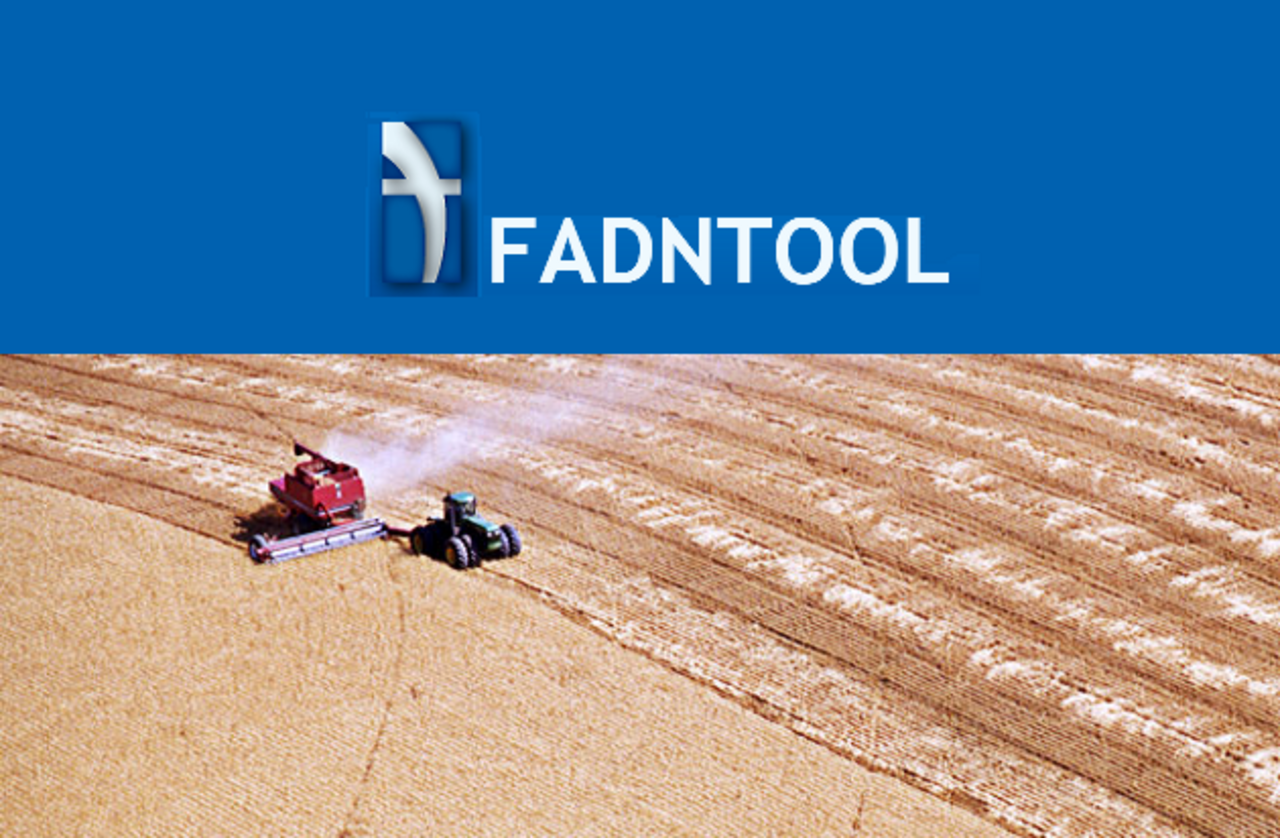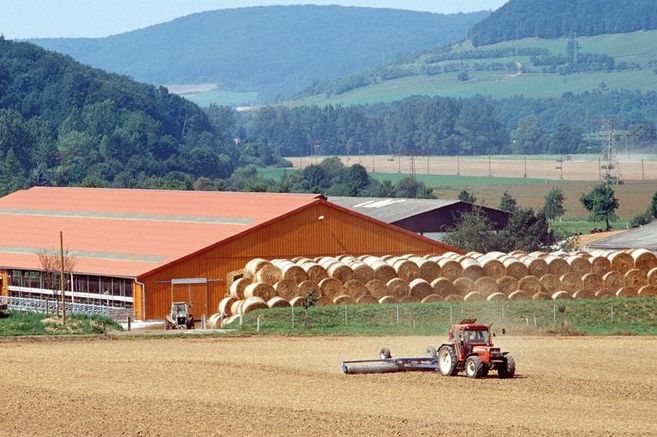Project
Model-based analysis of the structural change in agriculture

FADNTOOL Integrating Econometric and mathematical Programming Models into an Amendable Policy and Market Analysis Tool using FADN Database
In the year 2013, the EU agricultural budget was 57 billion €. Most of the payments to farmers were subject to certain conditions to contribute to the protection of climate and environment. To maximise the efficiency of the policy, the impacts of certain policies should be estimated. Economic models are in fact an important contribution. The main objective of this project is to improve and extend our economic models to better estimate the positive and negative impacts on the environment, income of farmers and land use or farm structure.
Background and Objective
The evolution of agricultural markets is difficult to predict, due to fluctuating prices and yields. The project’s objective is to combine existing economic models to predict the impacts of certain policies and changes on the agricultural markets more precisely. Those models should display agricultural production at farm-, regional- and national level and consider the impacts of uncertainty and risk. The methods applied are based on econometric and mathematical programming models. It is intended to validate these models by empirical application. The team of the Thünen Institute of Rural Studies aims to provide an improved tool for projections, which is based on the Farm Accountancy Data Network (FADN). For this, we use our experience with the Common Agricultural regionalized Impact (CAPRI)-farm group model.
Approach
In the first step, we prepared the FADN data and developed an application tool for the EU-Commission, in which the FADN data can be analysed in all its variety.
In the second step, we developed new methods of econometric and mathematical models. This step contained the development of a model that is capable to analyse structural change in agriculture. The models are derived from marketing science and are based on the concept of attraction of different action alternatives and the estimated impact of yield and price fluctuations.
Data and Methods
The data source is the Farm Accountancy Data Network (FADN) of the EU. Methodologically, we applied econometric and mathematical programming models.
Our Research Questions
- What are the drivers of structural change in agriculture?
- Do policies impact structural change and to what extent?
- How do farmers react to an increase of yield or price risk?
- What kinds of farm structures are most competitive in the future?
Results
With the application tool we developed, it is possible to view the project’s FADN data in tables or figures at farm or regional level and finally use the extracted data for further analysis in econometric or mathematical models. With that application tool, production values and their changes regarding crop- and animal production can be analysed. It is also possible to view input costs at farm level as well as subsidies and income. Furthermore, supply, yields and prices of the agricultural goods can be displayed. The project report of Neuenfeldt & Gocht (2012) presents the application tool as well as a description how the data is processed.
We analysed the structural change in agriculture using an econometric model. This analysis is based on a recent study at farm level, which we applied at regional level in Germany in this project. It showed that the future structural change is impacted most by the historic regional farm structure. The complete project report can be found in Neuenfeldt et al. (2014).
Thünen-Contact

Involved Thünen-Partners
Involved external Thünen-Partners
-
Rheinische Friedrich-Wilhelms-Universität Bonn
(Bonn, Deutschland) -
Aristotle University of Thessaloniki / ARISTOTELIO PANEPISTIMIO THESSALONIKIS
( Thessaloniki, Griechenland) - Universite de Perpignon
(Perpignan, Frankreich) - Wageningen University & Research (WUR)
(Wageningen, Niederlande) - University of Macedonia
(Thessaloniki, Griechenland) - University of Cyprus
(Nicosia-Cyprus, Zypern) - University of Macedonia
(Thessaloniki, Griechenland) -
Swedish University of Agricultural Science - SLU
(Uppsala, Lysekil, Schweden) - University of Warwick
(Coventry, Großbritannien (inkl. Nordirland)) - SZKOLA GLOWNA GOSPODARSTWA WIEJSKIEGO
(Warschau, Polen) - University of National and World Economy
(Sofia, Ungarn) - Universita Cattolica del Sacro Cuore
(Mailand, Italien) - Joint Research Centre (JRC)
(Brüssel, Belgien)
Duration
4.2011 - 3.2014
More Information
Project status:
finished
Publications to the project
- 0
Neuenfeldt S, Gocht A, Heckelei T, Mittenzwei K, Ciaian P (2021) Using aggregated farm location information to predict regional structural change of farm specialisation, size and exit/entry in Norway agriculture. Agriculture 11(7):643, DOI:10.3390/agriculture11070643
- 1
Neuenfeldt S, Gocht A (2014) A handbook on the use of FADN database in programming models. Braunschweig: Johann Heinrich von Thünen-Institut, 75 p, Thünen Working Paper 35, DOI:10.3220/WP_35_2014
- 2
Jansson T, Heckelei T, Gocht A, Basnet SK, Zhang Y, Neuenfeldt S (2014) Analysing impacts of changing price variability with estinated farm risk-programming models : paper prepared for presentation at the EAAE 2014 Congress "Agri-Food and Rural Innovations for Healthier Societies" ; August 26 to 29, 2014, Ljubljana, Slovenia [online]. Ljubljana: EAAE, 13 p, zu finden in <http://purl.umn.edu/182665> [zitiert am 22.09.2014]
- 3
Neuenfeldt S, Röder N, Gocht A, Espinosa M, Gomez y Paloma S (2014) Using market share and multiplicative competitive interaction models to explain structural change in the German agricultural sector : poster paper prepared for presentation at the EAAE 2014 Congress "Agri-Food and Rural Innovations for Healthier Societies" ; August 26 to 29, 2014, Ljubljana, Slovenia [online]. Ljubljana: EAAE, 6 p, zu finden in < http://purl.umn.edu/182955> [zitiert am 22.09.2014]
- 4
Neuenfeldt S, Gocht A (2013) Integrated software tool for processing accountancy data information at EU level - an application of CGIG. In: Clasen M, Kersebaum KC, Meyer-Aurich A, Theuvsen B (eds) Massendatenmanagement in der Agrar- und Ernährungswirtschaft : Referate der 33. GIL-Jahrestagung 20.-21. Februar 2013 in Potsdam. Bonn: Köllen



![[Translate to English:] Logo des Bundesministerium für Ernährung und Landwirtschaft](/media/allgemein/logos/BMEL_Logo.svg)